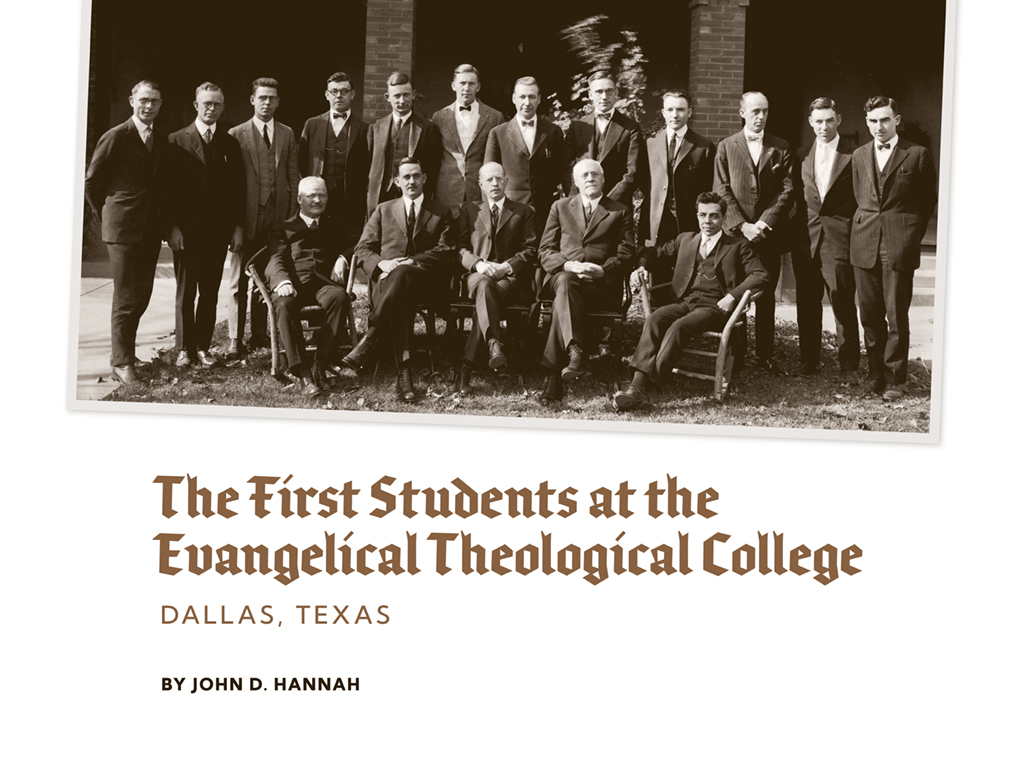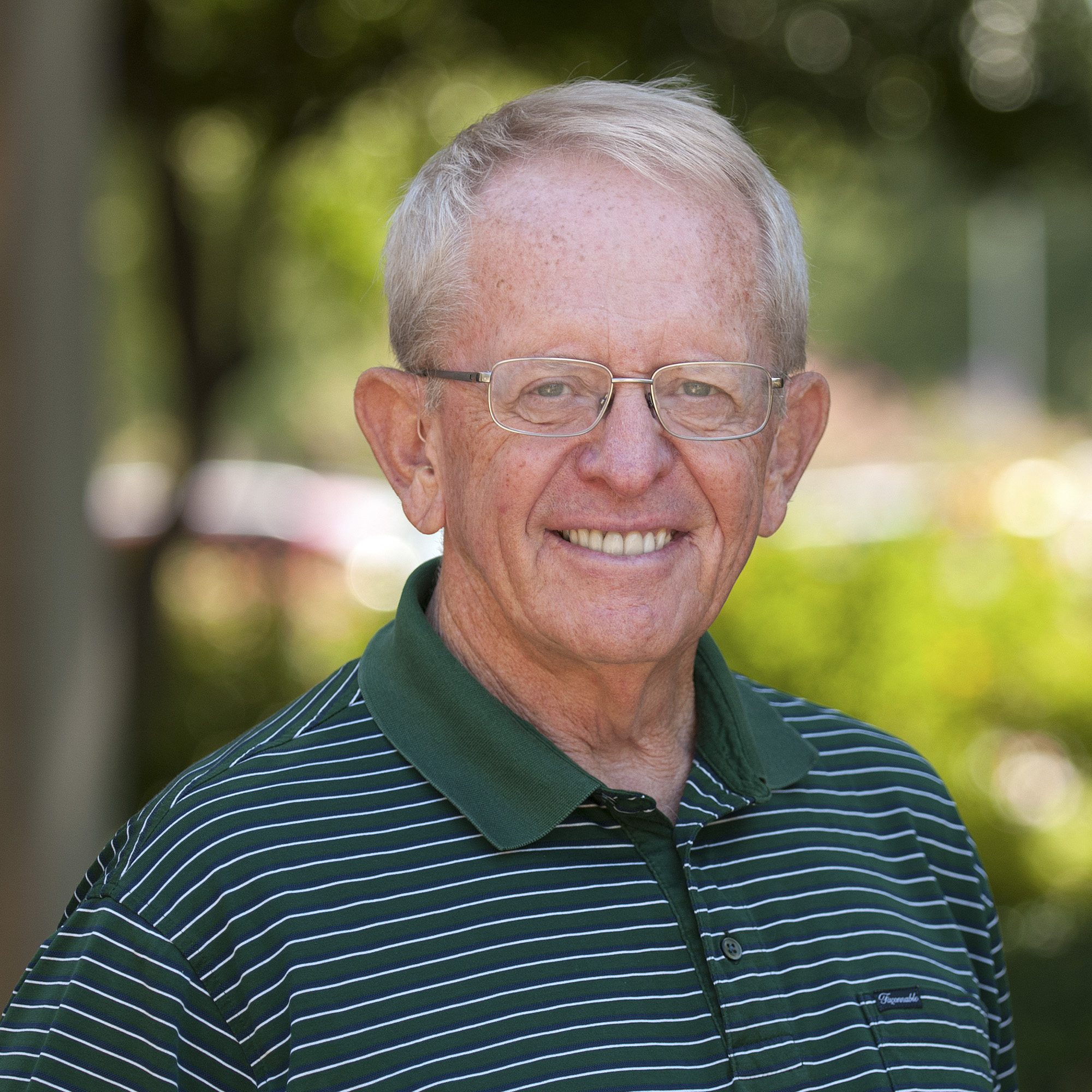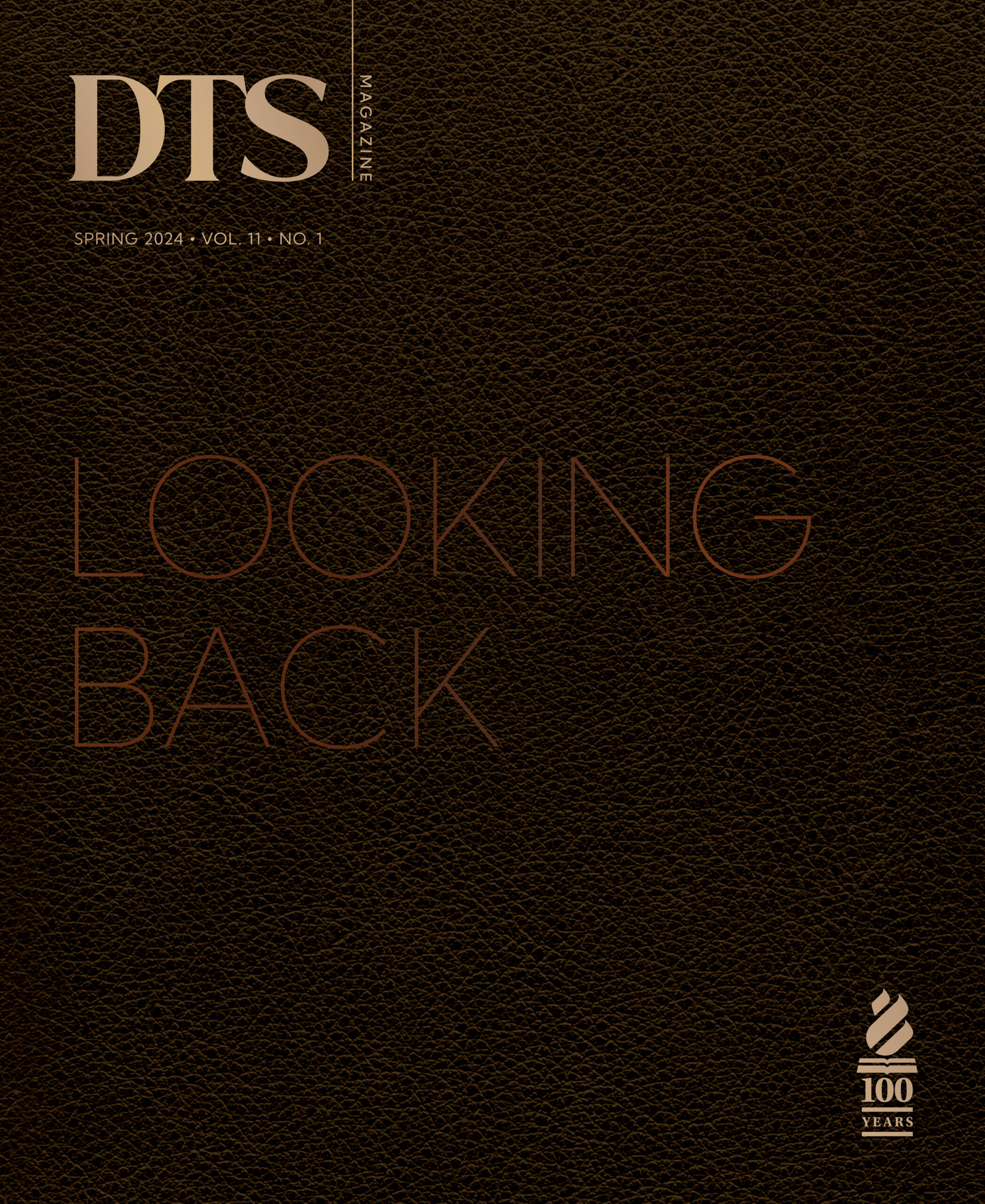THE FIRST STUDENTS AT THE EVANGELICAL THEOLOGICAL COLLEGE

Sometimes the beginning of a new endeavor hardly suggests what may gradually emerge over the decades. Initially without a campus, the Evangelical Theological College began in a two-story rental property in south Dallas. Classes convened in that former residence of a parishioner of the nearby First Presbyterian Church until the school secured its first property in 1926: the Gaston Mansion, on Swiss Avenue. Small beginnings, tenuous endeavor, and, unknown to the founders, headed toward the Great Depression.
From the founding of the school in 1924, the administrative restructuring of the institution in 1929, and the construction of buildings on the site—first Davidson Hall, housing classrooms, dining commons, the library, and offices in 1927, and then Stearns Hall, a dormitory, in 1929—seventy-five students joined the school’s fledgling community. Between 1930 and 1936, the year the school was renamed to Dallas Theological Seminary and Graduate School of Theology, an additional 125 students matriculated. What attracted students to a small, independent school to prepare for ministerial service?
The doors of the school flung open to create a voice against challenges to a new Christian orthodoxy that redefined the relevance of Jesus Christ and integrity of the Holy Scriptures. Unease became discernible in the enclaves of higher learning by the closing decades of the nineteenth century. A notable response to these trends was the emergence of the Bible conference movement, wherein the Bible became the central focus. Such conferences led to a more formal curriculum in emergent Bible institutes and colleges that offered certificates and degrees—and this led to graduate schools for ministerial preparation. Students who embraced historical orthodoxy came to DTS, a place that gave priority to the integrity of Holy Scripture. These first students (like the thousands of students who would follow them) shared a devotion to the Savior and a calling to share the gospel with the world. They came because they wanted to know Christ more deeply and to make him known.
Looking at the earliest years of DTS, we see that it had a small beginning, but by the second decade of its existence, the student body had grown, and new students brought more and more qualifications for continuing education. The seminary had moved from rental space to its own campus, with two major buildings constructed. Students from across the nation and around the world found their way to DTS. Most graduates pursued pastoral ministry in churches, with an equal number finding vocational fulfillment in foreign missions and education. In the 1920s and ’30s, students in pastoral ministry entered denominational churches, reflective of the fact that the denominations welcomed graduates from a nondenominational institution, as well as the fact that most of the earliest teachers had Presbyterian connections.
From the beginning, then, students came to DTS for all the reasons students still do today: the seminary’s doctrinal convictions, love of Jesus Christ, dependence on God’s Word, all brought together for comprehensive preparation to share the gospel with the world.
About the Contributors

John D. Hannah
Dr. Hannah has enjoyed a distinguished career of more than fifty years at DTS. He is a frequent and popular church and conference speaker both at home and abroad. His teaching interests include the general history of the Christian church, with particular interest in the works of Jonathan Edwards and John Owen. Among his published works are a history of DTS and a general history of the Christian Church. He remains active in church ministries and serves on the boards of several organizations.

